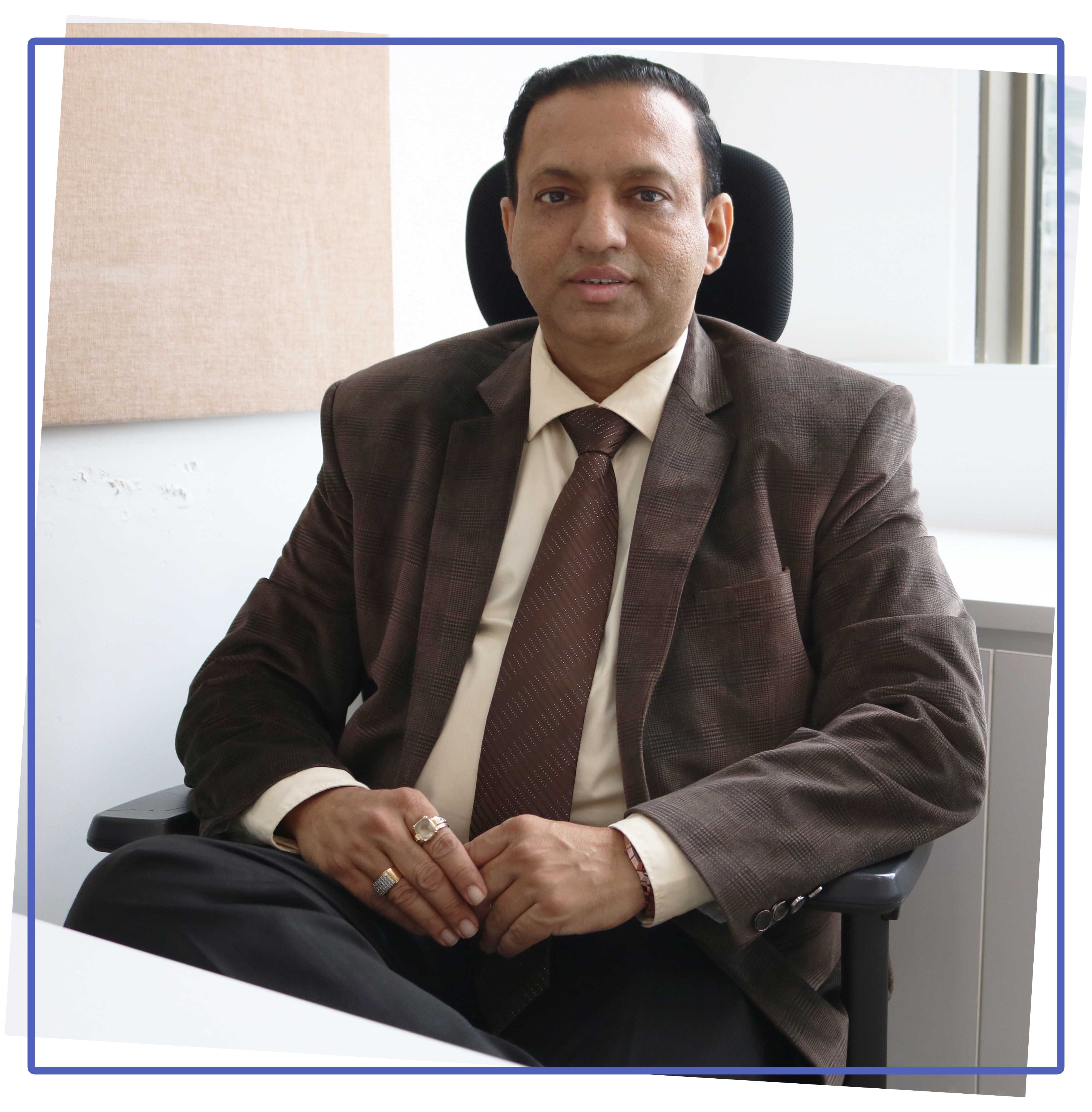

Dr. Abhijit G Bagul is an MBBS & MS in Surgery & has been awarded Fellowship in minimal access surgery (FMAS) from Sir J. J. Group of hospitals, Mumbai. He has been also awarded with fellowship at the Indian Association of Gastro-intestinal Endo-surgeons from the prestigious KEM Hospital, Mumbai.
Two of his research publications were reported to be rarest of rare cases in the world:Dr. Abhijit has been very active with community services and was present onsite, treating several victims during the Bhuj (Gujrat) earth quake disaster. He has been very instrumental in organizing different types of surgical camps for poor or low income group of patients.
A hernia means something coming through. It most frequently occurs when an organ or internal tissue pokes through a hole or weakness in your abdominal muscle wall. In many cases, people have no or very few hernia symptoms. You may notice a swelling or lump in your stomach area or groin. Often you have no hernia pain. If your hernia causes sudden pain and especially if it can’t be pushed back in, you should seek urgent medical care. It may mean that your hernia is trapped or tightly pinched where it pokes through the muscle wall (obstruction) and in extreme cases it may cut off the blood supply to your intestines and tissues in your abdomen (strangulation). A hernia is not usually a serious condition but it will not go away without hernia treatment known as a hernia repair.
Hernia repair surgery is the world’s most common surgical procedure. Hernia surgery can help to relieve pain, return the hernia abdominal organs to their correct place and, strengthen the weak muscle area.
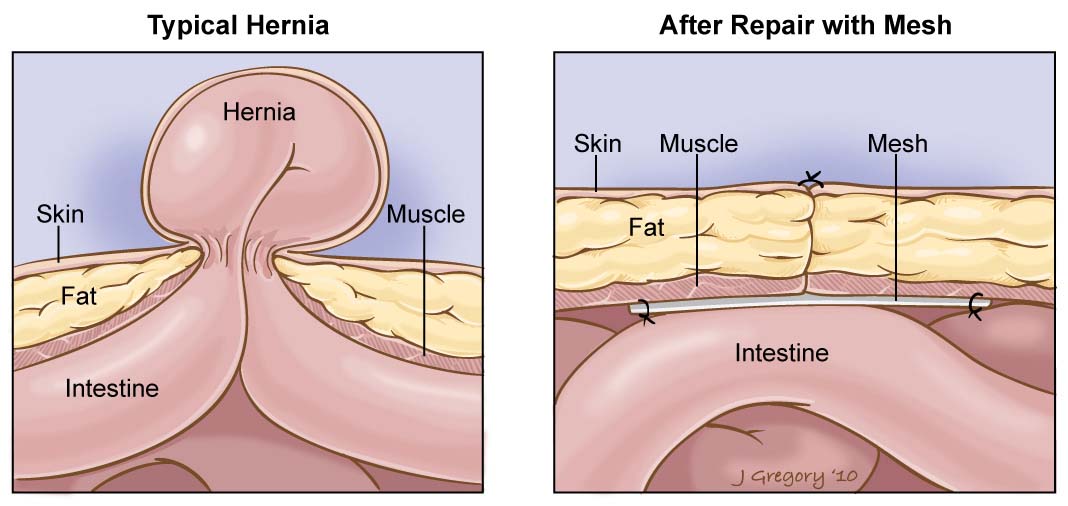
A hernia operation usually takes around an hour as a day case procedure. It can be performed by:
If hernia surgery is recommended, your surgeon will advise on the most appropriate type of surgery based on the location and severity of your hernia.
Most hernias are found in the abdomen. Areas of weakness in the abdominal wall where hernias are commonly found include the groin, upper stomach, belly button and, where you have a surgical scar.
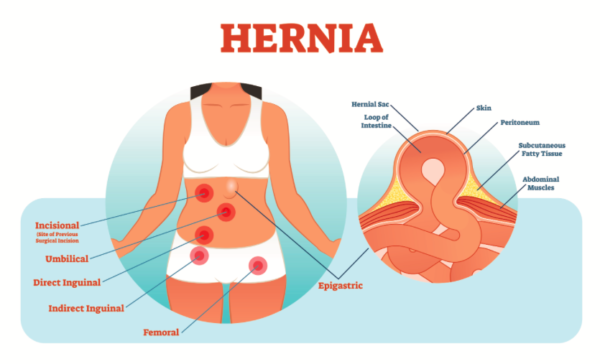
The most frequently seen types of hernia include:
Hernia surgery is a routine procedure, but as with all surgeries there are risks of complications. These may vary depending upon the exact hernia operation you have and your health. Your surgeon will discuss these with you in detail.
Often the greatest complication risk is a reoccurrence of the hernia. Other hernia surgery side effects include: build-up of seroma or a fluid-filled sac under the surface of the skin, inability or difficulty urinating, organ or tissue damage, wound infection and, rejection of the mesh.
Recovery time after hernia surgery is usually two to three weeks. Most patients will return to normal daily activities and go back to work within a week. You should not do any heavy lifting for at least six weeks. Your surgeon will talk to you about what you can and cannot do for your specific hernia operation.
You’ll have sixty days of post discharge outpatient care commencing the day you leave a we including a follow up with your surgeon to check on your hernia as part of your aftercare package.

The 3 D Mesh is placed using a very common open hernia procedure. The surgeon would make a 2 inch (5cm) incision above the hernia. As in all open procedure, they would dissect out the hernia sac . When the sac is free they would return it to the abdomen, and then with their finger would open a small space below the muscle to place the small flat disk. When the space is prepared, they would load the 3 D Mesh into the delivery device and "inject" it into the hernia hole. The flower will then spring open and fill the hernia hole. The rear disk would be placed and controlled and then the abdominal wall closed above the implant.
Had to undergo emergency surgery.Very talented doctor.Gave me Absolutely cosmetic scar not at all visible.Solves all problems easily.Attends all calls on priority.will never forget such a wonderful personality surgeon
Rajni Singh
Dr.Abhijit Bagul had an amiable personality and altruistic motives, Thank you for being dedicated and compassionate doctor that you are! Great job done by Fransclin (Sai Snehdeep Hospital's Insurance Staff). Thank you for all the great work done by Dr.Abhijit and his team.
Angel Abhilash
Dr Bagul is a really practical and knowledgeable person. I had a really huge hernia after pregnancy which he diagnosed properly and we went ahead with a planned surgery for the same at MPCT hospital. He has monitored and advised me properly both before and after surgery. I has provided inputs on queries and issues whenever needed. Very approachable - even on phone. Highly recommended. Thank you so much doctor.
Marleen Thevar
I was diagnosed with bilateral inguinal hernia. I was looking for a nearby hospital which is MPCT. I found Dr Abhijit Bagul online n consulted him. He suggested not to delay surgery. He was patient, helpful n answered all my queries. We went for a planned surgery on 23rd Jan 2020. Surgery went well n I was discharged on 24th. I took twin sharing room n stay at hospital was pleasant. Staff was friendly n helpful.
Naveen Dhamija
Great Genuine Timely Level Awesome service and advice by Dr. Abhijit Bagul, Best Laparoscopic, Hernia Surgeon in Navi Mumbai at the right time right place as per your needs and requirements with all the best possible he could do to solve my case. #SecondTime.
Amit Vasandi
I am a diabetic patient since 14 years and coz of High Sugar was suffering from Baleno Posthetis . Thanks to Dr. Bagul for timely help which resulted in avoiding further complexities. His knowledge about the subject is impeccable and he is the best surgeon in Navi Mumbai locality.
Prasanna Dhakulkar
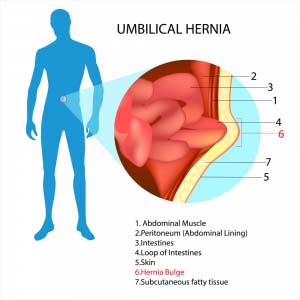
An umbilical hernia is a condition in which swelling is seen around belly button also known as a navel umbilicus, owing to an intestine or tissues bulge through the weaker section of the belly button...
Read More
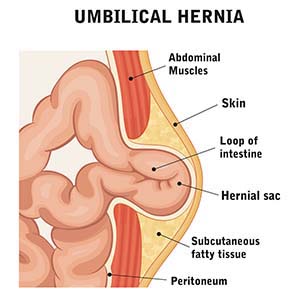
A hernia happens when an internal part of the body or area of an organ or tissue pushes or spills out through a weak spot in a surrounding muscle or tissue wall. These generally occur...
Read More

A hernia occurs when your inner abdominal muscles weaken, causing the abdominal wall in that spot to bulge out. Surgery for a hernia is common in the United States...
Read More

Address : C7, Budhyadev Mandir Marg, Sector 4, Sanpada, Navi Mumbai, Maharashtra 400705
Phone : 022 2775 0000

Address: X8 & X8/1, Thane - Belapur Road Opp Kopar Khairane Station, Navi Mumbai, Maharashtra 400710
Phone : 022 3966 6666

Address: Plot 12-13, Sector 20, Kopar Khairane, Navi Mumbai, Maharashtra 400709
Phone : 7400 429 057 / 961 916 9203

Address: Plot No. 28, Juhu Chowpatty Marg, Juhu Nagar, Sector 10A, Vashi, Navi Mumbai, Maharashtra 400703
Phone : 022 3919 9222

Address: Sector 5, Nerul, Navi Mumbai, Maharashtra 400706
Phone : 022 2773 5901